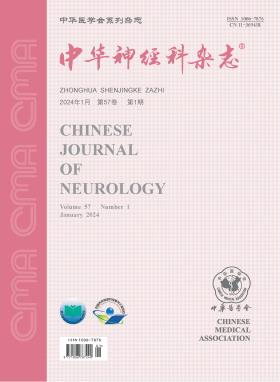The treatment of olfactory ensheathing cells-neurotrophin-3 gene engineering cell transplantation on experimental allergic encephalomyelitis
Q4 Medicine
引用次数: 0
Abstract
Objective To explore the repair mechanism of olfactory ensheathing cells (OECs)-neurotrophin-3 (NT-3) gene engineering cell on neuron myeline and axon of experimental allergic encephalomyelitis (EAE).Methods OECs-NT-3 gene engineering cell, constructed by ueurotrophin-3 transinfecting OECs inducted by retrovirus, was transplanted into lateral ventricle.The migration and distribution were observed and compared with control group and OECs transplantation group.Then myeline repair and axon regeneration were evaluated in the aspects of function score, morphological structure, SYN grey level Results (1) OECs-NT-3 could survive, diffuse, migrate with axons, spread in the focus diffusely on the 28th day after transplantation.(2) OECs-NT-3 survived and migrated to the transcription level of NT-3 mRNA in transgene group, being (212.3±16.1)×10-2, significantly higher than OECs group ((1.98±0.19)×10-2) and the contrast group ((1.23±0.13)×10-2, t = - 31.161, -31.928, P < 0.01).(3) The myeline of transgene group was kept complete and the number of inflamatory focus was lower than those of other groups (t = 11.388-22.728, P <0.01).(4) The SYN grey level of transgene group was obviously higher (P < 0.01).Conclusion OECs-NT-3 cell expresses NT-3 in EAE stably and effectively, which contributes to the repair of myeline and the regeneration of axon. Key words: Encephalomyelitis, autoimmune, experimental; Gene therapy; Neurotrophic 3; Gene transfer techniques嗅鞘细胞-神经营养因子-3基因工程细胞移植治疗实验性变应性脑脊髓炎
目的探讨嗅鞘细胞(OECs)-神经营养因子-3 (NT-3)基因工程细胞对实验性变应性脑脊髓炎(EAE)神经元髓系和轴突的修复机制。方法逆转录病毒诱导ueurotrophin-3转染OECs构建OECs- nt -3基因工程细胞,将其移植至侧脑室。观察其迁移分布情况,并与对照组和OECs移植组进行比较。然后myeline修复和轴突再生进行了评估函数方面的得分,形态结构,SYN灰度级结果(1)OECs-NT-3可以生存,扩散,迁移与轴突,传播的广泛关注在移植后28天。(2)OECs-NT-3存活和迁移到NT-3信使rna的转录水平转基因组(212.3±16.1)×10 - 2,明显高于近年集团((1.98±0.19)×10 - 2)和对照组((1.23±0.13)×10 - 2,t = - 31.161,(3)转基因组小鼠骨髓保持完整,炎症灶数较其他组明显减少(t = 11.388 ~ 22.728, P <0.01)。(4)转基因组小鼠SYN灰色水平明显升高(P <0.01)。结论oec -NT-3细胞在EAE中稳定有效地表达NT-3,有助于髓系的修复和轴突的再生。关键词:脑脊髓炎;自身免疫;实验性;基因治疗;神经营养3;基因转移技术
本文章由计算机程序翻译,如有差异,请以英文原文为准。
求助全文
约1分钟内获得全文
求助全文

 求助内容:
求助内容: 应助结果提醒方式:
应助结果提醒方式:


